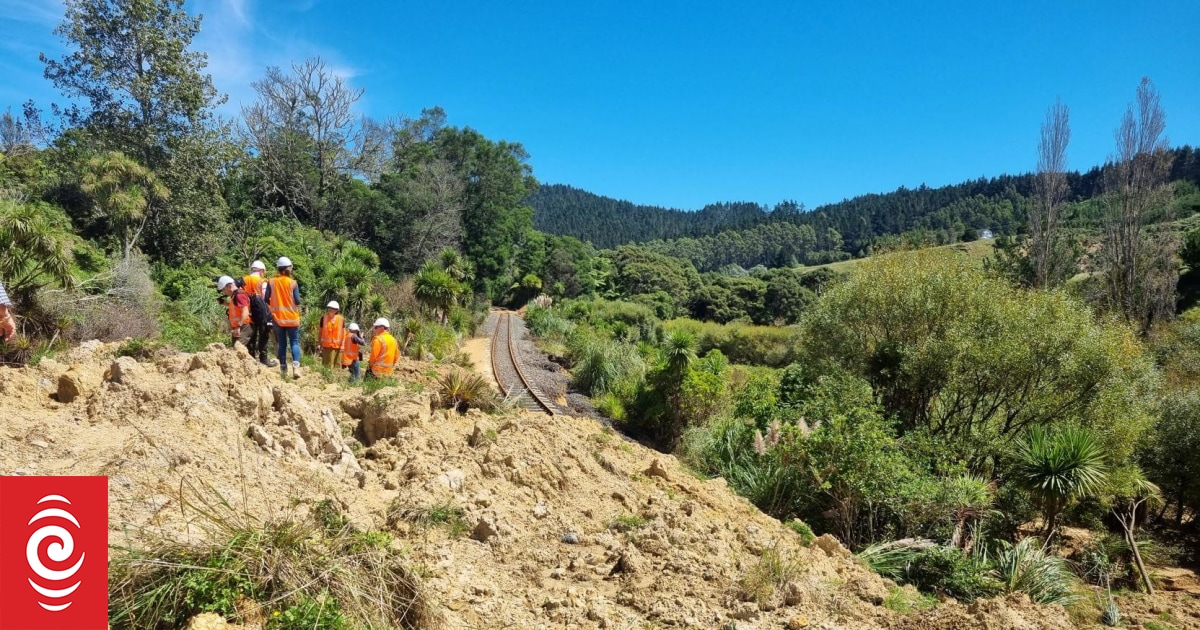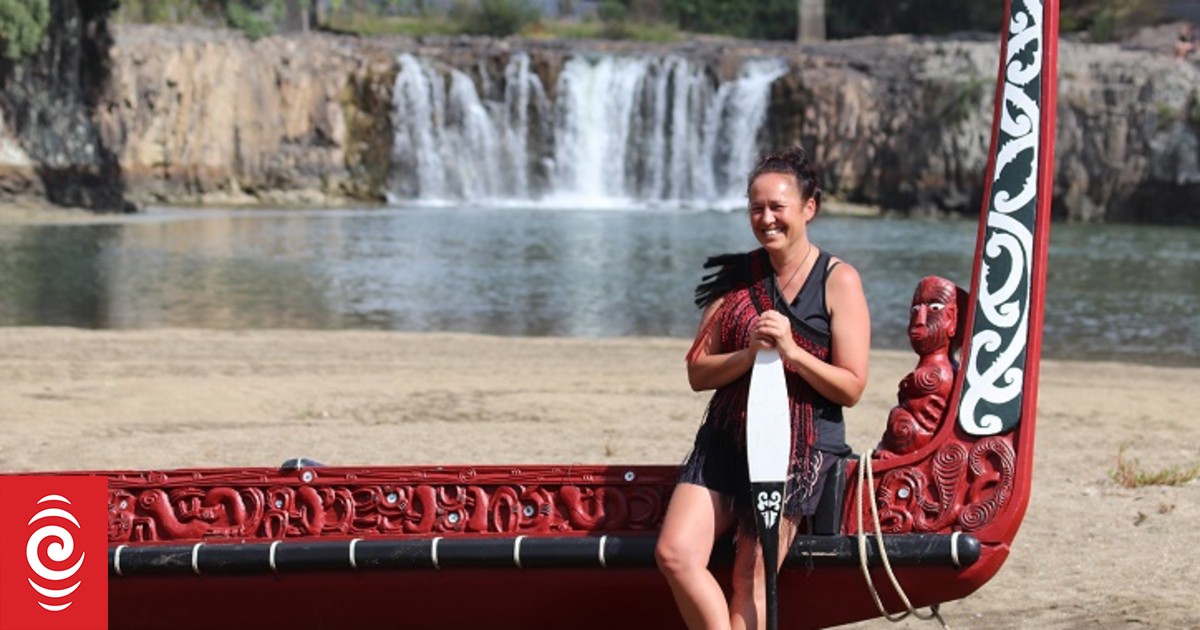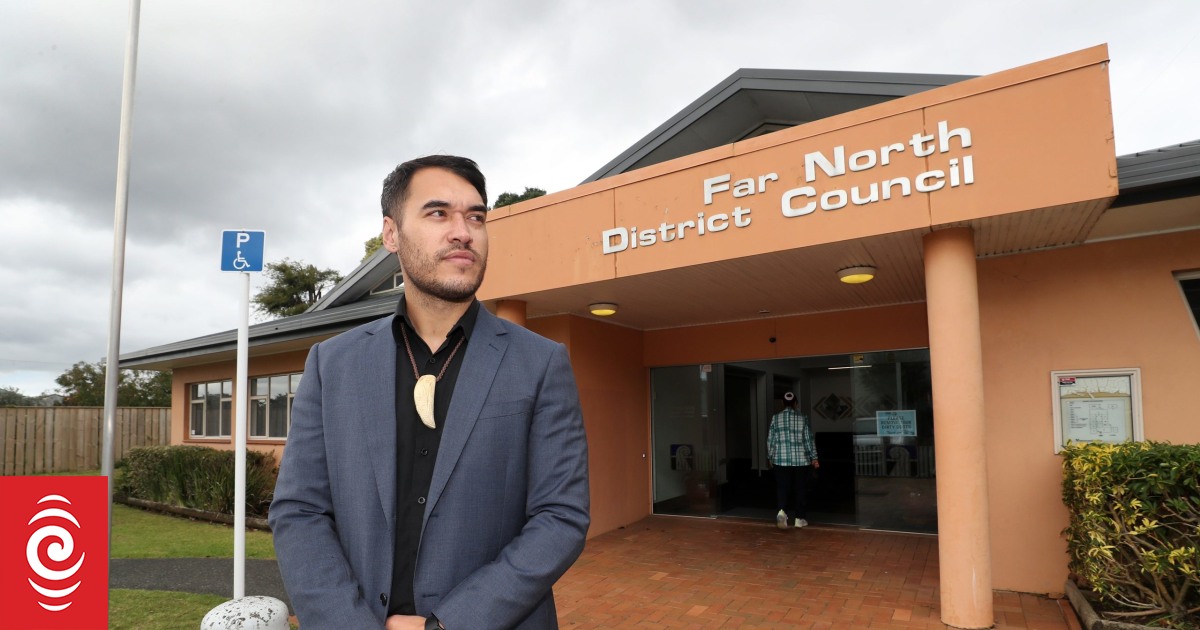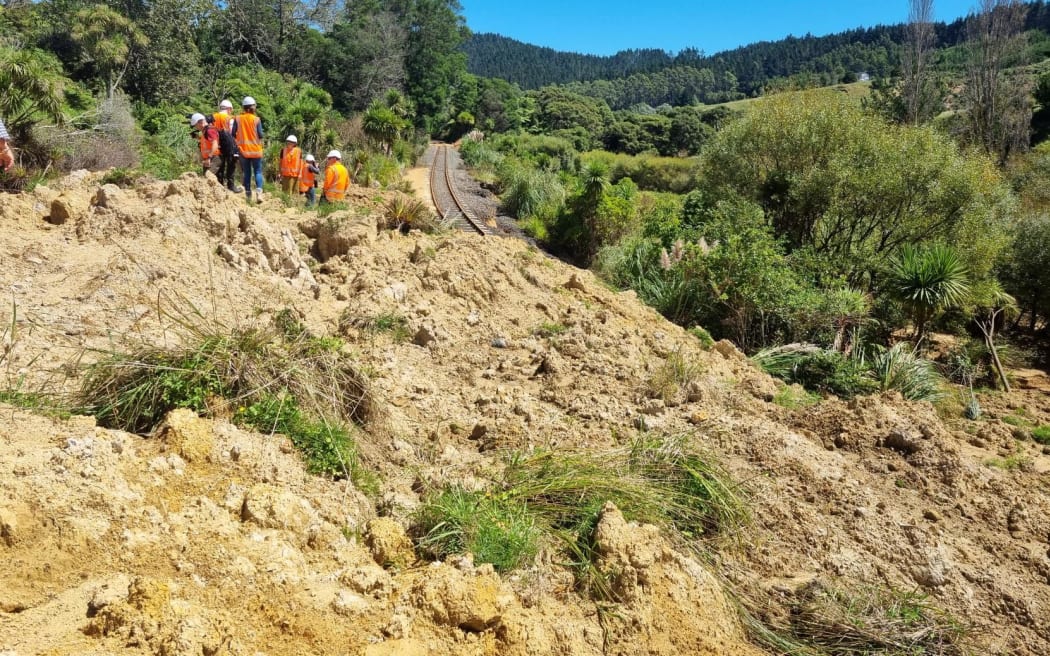
More than 40 extra freight trucks per day will be on the already fragile roads of Northland after a major slip on the region’s main rail network.
Photo: RNZ / Rayssa Almeida
Hundreds of freight containers will now have to be trucked on Northland’s already fragile roads each week.
The main railway freight line between Auckland and Northland is out of action because of a slip near Helensville.
The slip covered an area nearly three times as big as a rugby field – 35,000 tonnes of earth are on the tracks, burying more than 100m of the line.
As a result, hundreds of freight containers will now have to be trucked on Northland’s already fragile roads each week.
“This is pretty heartbreaking to be honest, because the government just spent millions of dollars to reopen our line, to lower our tunnels connecting Auckland to Northland, so we can actually use this train line more feasibly,” Far North Mayor Moko Tepania told RNZ’s Morning Report today.
“But hopefully as quickly as they can, they can get it reopened so we can see more trains bringing goods to and from Northland.”
With dozens of smaller slips on the line also needing to be cleared, it is expected to be several months before the line can be used again.
“We’re looking at 24 to 48 containers a day having to be trucked, and the road obviously is closed at the same time as rail, so they have to do quite extensive detours I understand through Dargaville,” Todd Valster of the Rail and Maritime Transport Union told Morning Report.
“That creates risks for other road users, it creates risk for the truck drivers having to do big, long hours and maybe there are other opportunities to think about moving that freight in other ways, like we did when we had the line closed at Kaikōura where they shipped things for a long time.”
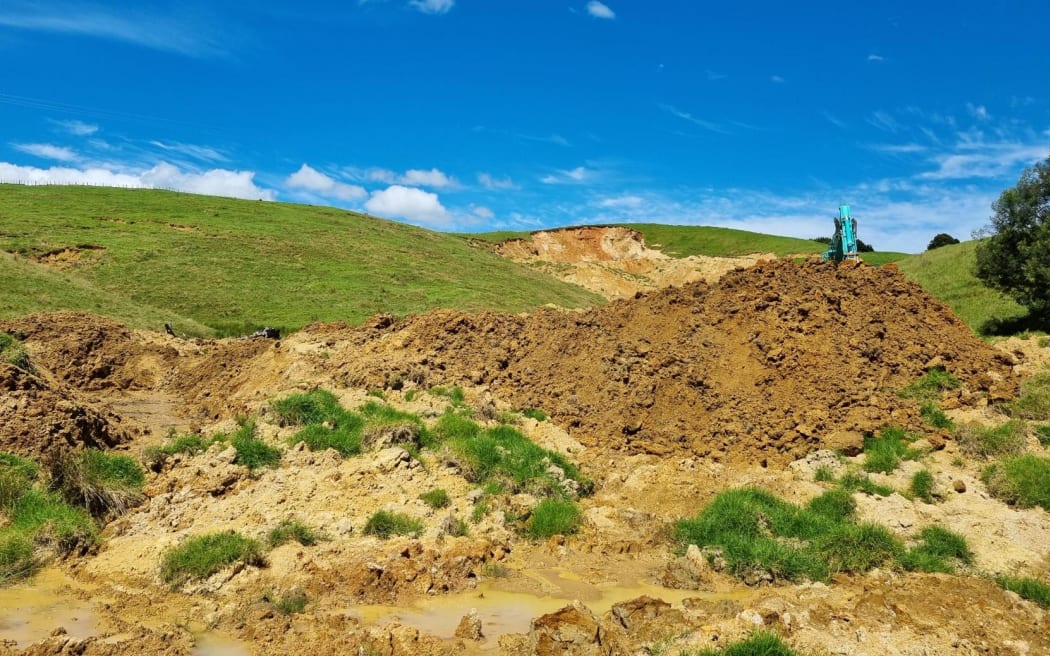
More than 40 extra freight trucks per day will be on the already fragile roads of Northland after a major slip on the region’s main rail network.
Photo: RNZ / Rayssa Almeida
“Coastal shipping is something that we definitely want to see happen,” Tepania said.
“What we need is government money to help develop the infrastructure that we need at our ports. Until we see that happen, we can’t raise the infrastructure capital that we need to inject into our port in Northland to be able to handle more movements.”
But with money now needed for land transport routes in not just Northland, but also Hawke’s Bay and Tai Rāwhiti, he feared investing in shipping infrastructure would not be a priority.
“You kind of go around in this transport loop and what you end up with is nothing working.”
Valster said both land and sea transport options should be better developed.
“Hopefully somebody’s thinking about that. So you know we need road, rail and coastal shipping. It’s not a versus situation – it’s a complementary situation.
“And you know, look at what Air New Zealand’s done – they said okay, let’s put some flights on between Napier and Gisborne that they normally wouldn’t do because they understand… it’s inaccessible at the moment.
“So yeah, having a bit of resilience or a little bit of plan B around when these things happen, particularly when road and rail are taken out at the same time.”
Power is also at threat after a massive slip near two towers which supply most of Northland.
“It is quite scary. We’re taking it very seriously, you know?” said Tepania.
“Civil Defence has warned all of the residents of Northland there is the potential we could lose power to our entire region. So, we know the drill – prepare, prepare, prepare. Fingers crossed.
“Then we’ll pray that doesn’t actually happen and we can get a bypass done for that slip for that main powerline and you know, carry on. But we just gotta hope that it doesn’t happen and prepare, should it happen.”
He said there are still people in the Far North without power, three weeks on from the storm.

